Dia de Los Muertos is one of the most important events celebrated in Mexico. In fact, it has become known all over the world. Although the pandemic has reduced the number of travelers to witness the celebration, Mexican families still celebrate “Dia de Muertos”.
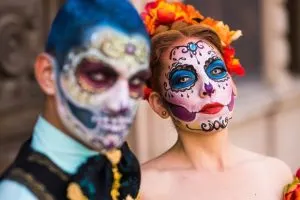
Oaxaca Day of the Dead 2022:
The Ultimate Travel Guide
Mexico comes alive during this celebration. However, if there is one place that you should visit during this time, it is Oaxaca City. In fact, this is the perfect place for you to witness and experience Día de Los Muertos.
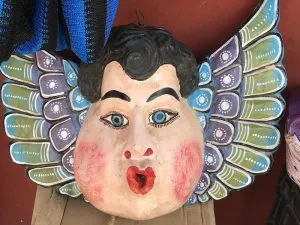 Oaxaca Day of the Dead
Oaxaca Day of the Dead
The Day of the Dead festivities in the state of Oaxaca is an experience you will not forget. This is where you will see the culture of the indigenous people and Hispanic traditions clash and merge.
Oaxaca City is the capital of Oaxaca located in southern Mexico. Aside from that, it is one of the most beautiful and culture-rich cities in Mexico. It is not surprising that it is one of the UNESCO World Heritage Sites.
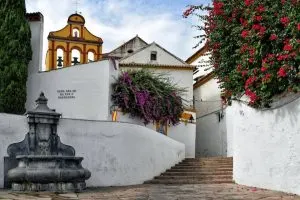
Tourists who visit Oaxaca will see its rich history in the architectural structures still standing today. These buildings also give a glimpse of the times when the Spaniards arrived on the Mexican shores. Also, the culture of the city shows how it was transformed over the years.
Prehispanic Times
In the start, the indigenous culture viewed life and death as a constant cycle. This is why they honor these two in their rituals and celebrations. If you read up on their history, ancient civilization’s names for the place where their dead go. Since this is a magical journey for their departed loved ones, the living performs rituals to assist them in their journey.
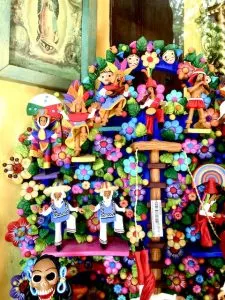
Among the funeral offerings that the living prepare are water, masks, foods, jewelry, figurines, and more. Each one of these items has its own meaning or purpose. For example, the figurines represent their deities while food means life.
Hispanic Times
Since the Spaniards came and conquered Mexico, they were also able to conquer the spiritual views of the locals. In fact, they were able to transform the country’s religion into Catholicism through evangelization. This is why the “Day of the Dead” was born.
In fact, it coincided with All Saint’s Day and All Souls’ Day. On November 1st, they celebrate “Todos Santos”. This is the day when the dead children arrive. The following day, November 2nd is the “fieles difuntos” day, or the time when the adults arrive.
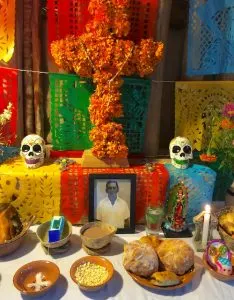
In Mexico, the dates for the Day of the Dead celebrations tend to vary. Some celebrate on October 28th while others hold it on October 31st. On the other hand, some regions only have it on November 1 and 2.
A Guide to the Day of the Dead Traditions and Symbols in Oaxaca
Like it was mentioned before, each region has its own specific element when celebrating Día de Muertos. Here we will talk about the traditions and symbols you will find in Oaxaca.
Day of the Dead Altars
The altar is the centerpiece of this tradition. However, it will vary from one family home to the next. Since the altar represents the doorway to the realm of the dead, this is where family members place their offerings. Bigger altars represent the status, wealth, or importance of the dead. Also, each tier or layer of the altar has a meaning.
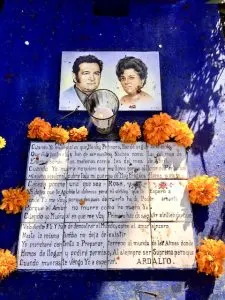
For example, an altar that has two tiers represents heaven and earth. Three tiers include purgatory. On the other hand, 7 tiers represent the deadly sins and 9 tiers show the long journey of the dead to reach the realm of the dead.
Offerings
Before, the offerings that were given were the fruits from the seeds that were sown. These represent the sharing attitude of the people as well as their gratitude for their harvest. This is why you will see corn, tortillas, fruits, and seeds on a family altar.
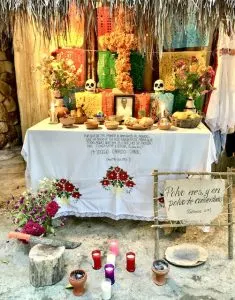
Aside from that, the dead’s favorite food and drinks are also present on the altar. You will see candies for children and cigarettes for adults in many altars. Aside from that, you will see moles, moles tamales, and enchiladas too. After all, these are common in Oaxaca.
Sweets and Candies
Aside from the local foods, the sweets and candies are worth seeing too. There is Pan de Muerto which is a staple in Mexico during this event. They use amaranth seed and corn to make this sweet bread. Legends say that the Spanish were shocked to see the hearts of princesses placed on altars. This is why they replaced it with heart-shaped bread.
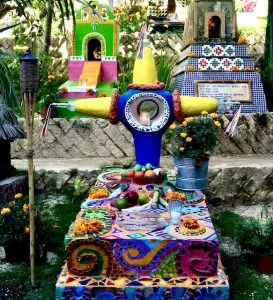
Another type of sweet common during this event is the sugar skull. During pre-Hispanic times, the Aztecs and Mayans displayed the skulls of princesses and warriors. As in the case of Pan de Muerto, the sugar skulls replaced the actual skulls that the indigenous people displayed on their altars.
Papel Picado
Aside from the colorful altars that line the streets, you will also notice colorful papers hanging across the streets. These are papel picado which are cut decorated sheets that represent air in this tradition.
Marigold Flowers
Marigolds or “cempasuchiles” are typical in many altars during this event. This began during the Hispanic times since offering flowers is a European tradition. In Mexico’s legends, the history of the plant started with a tragic love story. It was said that a young warrior died in battle. The girl he left behind prayed that they would be reunited. She was turned into a pretty flower that only opened her petals when a hummingbird came to her. Today, this flower became the representation of the earth on the altar.
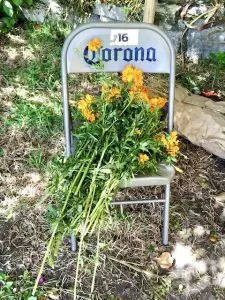
Candles, Incense, and Salt
Candles are one of the Day of the Dead essentials as they help light the path for their dead relatives. On the other hand, locals also use incense to attract the dead as part of their rituals. Aside from that, it also helps keep bad spirits at bay. Salt, on the other hand, helps in purifying the visitor’s soul.
Images of Deities
It is not uncommon to see images of deities added to altars during the Day of the Dead. For example, many places have an image of the Virgen de Guadalupe to show their faith. Aside from that, seeds, flowers, crosses, or limestone paths represent the four cardinal points.
La Catrina
La Catrina is part of Mexican culture. In fact, it was created by the cartoonist Jose Guadalupe Posada in black and white. The cartoonist used it as a satire to make fun of local families that denied their lineage. Later on, Diego Rivera gave La Catrina her full body and colors. You will find her all over the country in different styles and designs.
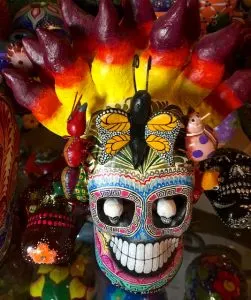
Muerteadas or Comparsas
The “muerteada” is similar to a parade or carnival where entire neighborhoods participate. Neighbors will follow a live band dressed in colorful and elaborate costumes. There will be a dance-off between neighborhoods until one gives up. These boisterous parades occur in Oaxaca and the rest of the country. In fact, these theatrical parades are one of the highlights to see in the course of the week.
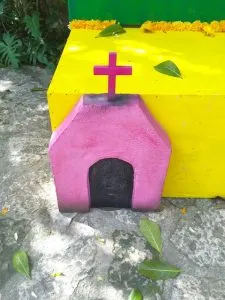
On the other hand, “comparsas” happen during the first or second of November in most villages. The parade begins to the tune of brass bands going down the streets. However, in the city center, neighborhoods and local businesses hold their own.
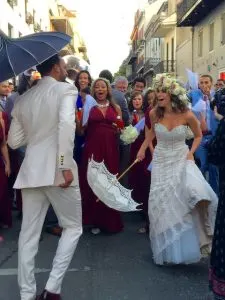
The Vigil
The gravesites in Oaxaca come to life during this time of year. Local families decorate the graveyard and hold their vigil from October 31st to November 1st. The atmospheric vigils filled with lights, candles, and food are worth seeing and experiencing here. Also, expect that there is loud music in the graveyards. This adds to the festive vibe.
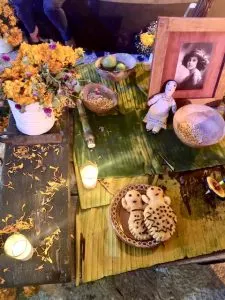
Hand-made Sand Tapestries
After the vigil in local cemeteries, the “rezadores” make these tapestries. This is an ancient tradition that represents the portal between life and death. In fact, they make this a sendoff for the souls who visited during the Day of the Dead. Also, these sand tapestries are representations of the Catholic tradition, “from dust to dust”.
Should You Join a Day of the Dead Tour?
Joining a tour is not a prerequisite, but it is a good idea. In fact, one of the advantages of joining smaller tours is that you can skip the tourist celebrations. Instead, you will be taken to local homes and cemeteries for an authentic Day of the Dead experience.
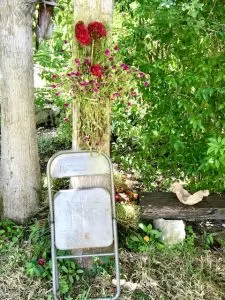
Aside from that, your tour guide will provide you with mezcal, hot chocolate, and make-up for the celebration. Not only will you learn more about Oaxaca’s traditional celebrations, but you can participate in them too.
Graveyards to Visit
There are several graveyards that tourists can visit during the festivities. Here are the more popular ones you should add to your itinerary.
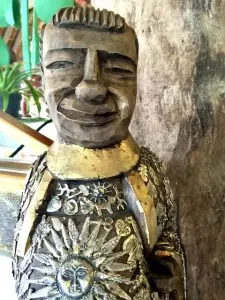
El Panteón nuevo de Xoxocotlán
This is a smaller graveyard featuring stone tombs. You will find a chapel at the end of the cemetery where they hear mass. Also, there is live music here.
El Panteon General de Oaxaca
Meanwhile, this cemetery was closed from 2017 to 2019 because of an earthquake. Fortunately, it is now open once more to the locals and tourists. What makes this a good place to visit are the candle niches. They help make the place more solemn.
Santa Maria de Atzompa
What makes this place extra special are the taller candles placed by families. There are no tombstones here. Instead, the graveyard is full of dirt mounds to mark graves. Families place candles around them. Aside from that, expect live music here.
Planning Your Day of the Dead Itinerary
If your Mexico bucket list includes experiencing vibrant Day of the Dead celebrations, you’re in luck. You can use this as your guide in making your itinerary. However, the first thing that you should do is book private tours when you can. In fact, this is the best way to immerse yourself in this Mexican Halloween celebration. There are tour operators that have an alliance with National Geographic so you can start with them. In fact, they offer an orientation walk to help you get your bearings in the town.
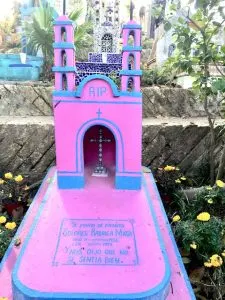
Aside from that, if you are planning on visiting Oaxaca for this festival, make sure that you arrive earlier. This way, you will be able to visit the best places in and around the city. That said, here’s a guide what you can do in this small town during the Day of the Dead festival.
October 28
This is the perfect time to put on your walking shoes and bring your camera as you explore the town. In fact, you should head to the local market for some great snaps. You should head to the 20 de Noviembre market, Benito Juarez market, and the Mercado de Abastos. Here you will find the stalls filled with food and other items needed for their home altars.
October 29
Meanwhile, October 29 is the best time to look for your face painting options. Also, public displays of altars are complete at this time. You can visit the 8 main regions in Oaxaca to see their beautiful altars.
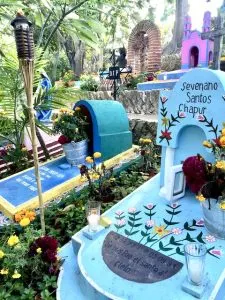
October 30
Spend the rest of the day walking around the town. Also, make your way to the Pan de Muerto and chocolate fair. You will find this beside the municipal palace. Aside from that, there are plenty of open-air events on this day. Among these are plays, live music, and various performances. Even if most of them are in Spanish, witnessing the festive vibe is always a thrill.
October 31
There are several events happening on this day. However, you will need to choose between Xoxo and Atzompa for their vigils. Aside from that, the parties are picking up on this day, but attend one after the vigil.
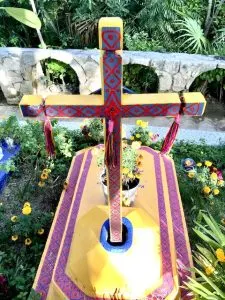
November 1
This is the best time to have your face painted as part of the tradition in Oaxaca. You can also wear your costume on this day. Don’t forget to bring the mezcal given to you in your guided tour. You can share it with the rest of the partygoers lining the streets. This is the main event for the day so be sure to participate in it.
November 2
You can continue your exploration of Oaxaca. The altar displays are still on full display here for you to admire. Aside from that, you should also see the “muerteadas” downtown. Also, make your way to the La Plaza de la Danza for the sand tapestries. There is also a big concert at the end of the day.
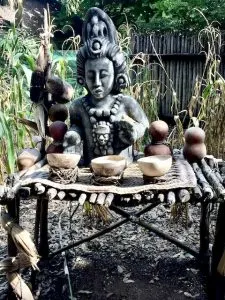
How to Reach Oaxaca City
The eclectic city of Oaxaca is the perfect place to celebrate Dia de Muertos. The good news is that there are direct flights here from LA, Chicago, and Dallas. You will land at the Oaxaca International Airport. On the other hand, you can also reach it from Mexico City, Cancun, or other regions by plane. You will still land at the Oaxaca airport which is a few minutes away from the heart of the city. From here, you can ride a collectivo, take a bus, or hire a taxi to take you to your hotel. You can also rent a car here if you prefer to drive on your own.
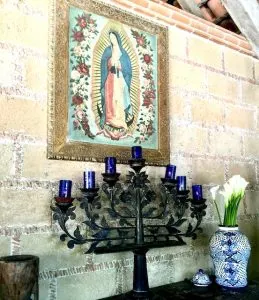
Activities to Consider in Oaxaca
Aside from attending one of the important holidays in Oaxaca, there are other activities that you can do here too. Here are a few that you can add to your trip here.
Teotitlan del Valle
This little village is 30km from Oaxaca and is a great place to go on a day trip. Aside from the historical buildings here, there is also the Monte Alban to see. Also, their Sunday market is worth seeing since vendors from different villages go here to sell their wares. The good news is that this is a short drive from Oaxaca so if you have a rental car, then go and visit it.
Puerto Escondido
Aside from celebrating Oaxaca Day of the Dead, you can also spend the rest of your trip exploring its beaches. In fact, Puerto Escondido is famous as a surfing spot thanks to the Mexican pipeline. Make sure that you try the local foods here because they often serve fresh seafood. This is one of the best places to sample the flavors of Oaxaca. The best part is that you can stay in a boutique hotel for a few days to enjoy the beaches.
San Bartolo Coyotopec
Another place that you can visit during your free time is the San Bartolo Coyotopec. This is not different from other small villages in Oaxaca. However, what makes it worth your trip is their black clay pottery. In fact, if you are on a guided tour, this is one of the places you’ll be taken to. You will not be able to stop yourself from buying a piece or two of pottery here.
San Felipe
San Felipe is also worth exploring while you are in Oaxaca in early November. From here, you can visit the archaeological site in Monte Alban. Also, head to the Zocalo to see street vendors selling unique cuisine. For sure, you will find your favorite food here.
Wrapping up Day of the Dead
Although Dia de Los Muertos was not open to travelers last year, this year is different. With the world opening once more, it is high time to make plans to visit Mexico. If you are eager to witness how the locals guide their loved ones through the spirit world, then time your stay here during the Day of the Dead.
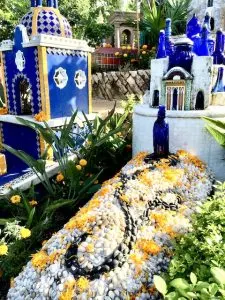
Oaxaca is definitely one of the best places to head out for this annual festival. Not only do the streets come alive with colorful decorations and altars, but the vibe here is also energetic too. If you are expecting a somber celebration, you will be surprised. After all, this tradition is not only colorful, but it is loud and cheerful too. If you want to know more about the celebration, hire local guides to take you around the city. This way, you will see popular tourist attractions and even visit a local house to see their displays too.
Everyone is welcome to participate in the festival. Guests are welcome to join families who are beside the graves of their loved ones. Of course, there are some dos and don’ts that you should follow. For example, ask permission first before you take photos of the locals and their altars. Aside from that, do not disturb the altars and sand tapestries. Remember that this is an ancient tradition in the country. Of course, do enjoy yourself while you are here. This is a day for remembrance. Feel free to join the parades and dress up in colorful costumes as the locals do. For sure, this is one Oaxacan event that you will not soon forget.

